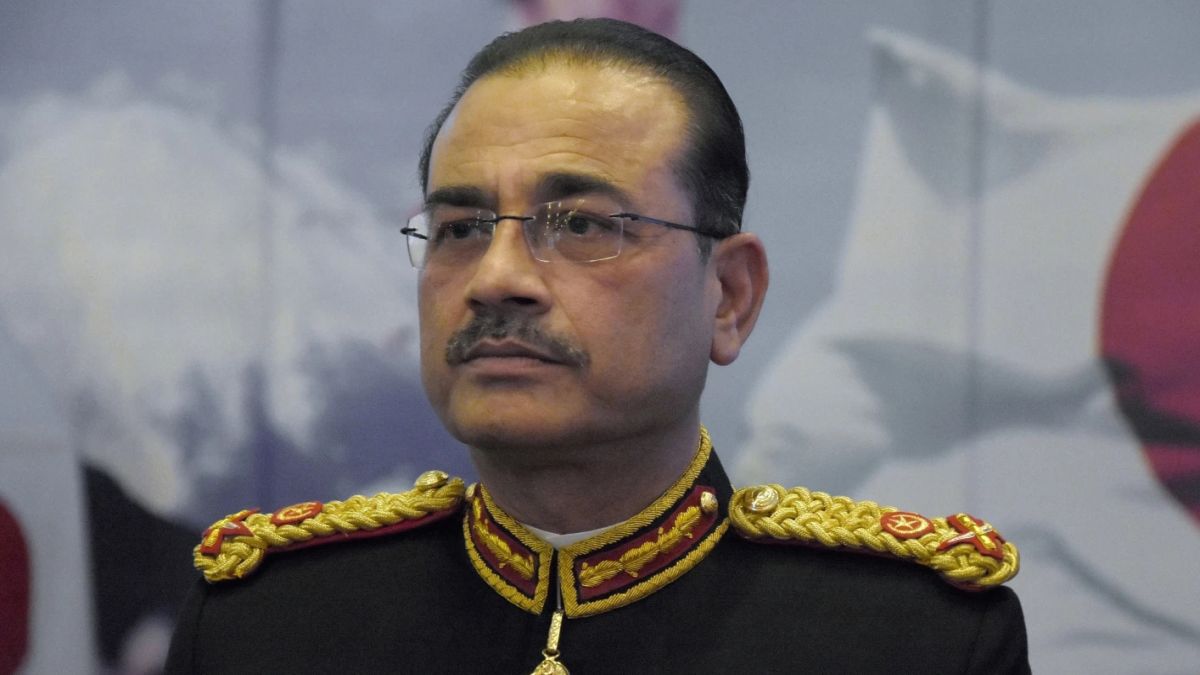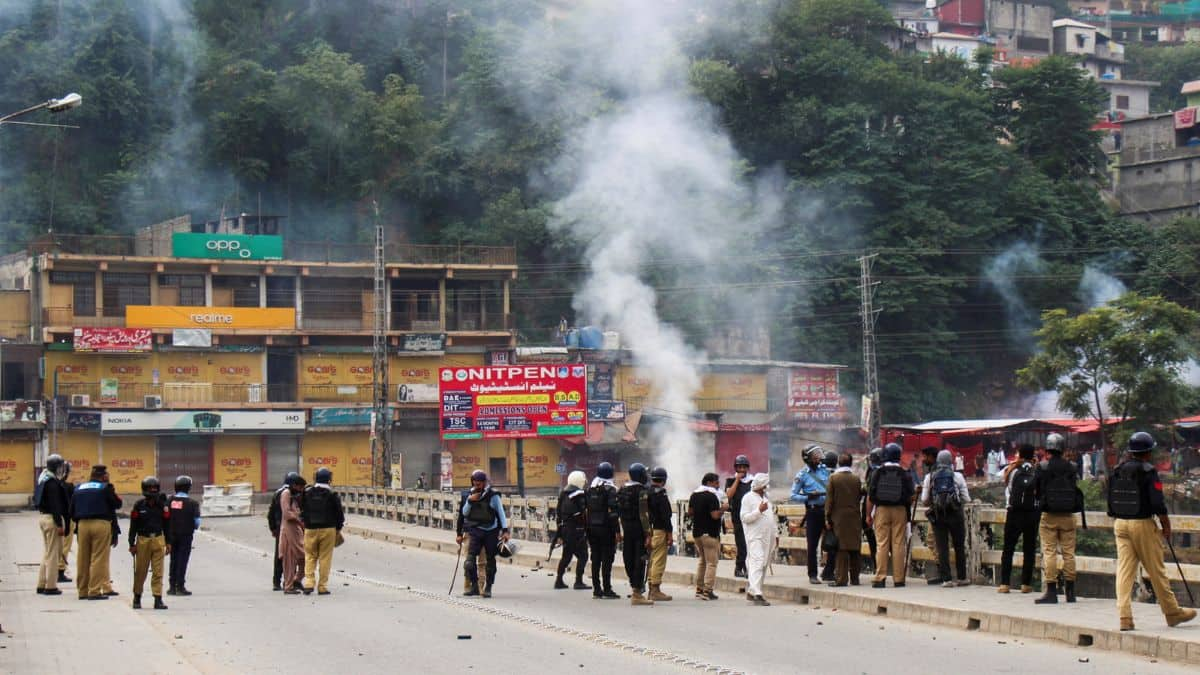Pakistan Army Chief Field Marshal Asim Munir continues to delude Pakistan about the results of Operation Sindoor conducted by India against Pakistani terrorist entities, and later its military facilities, in May. This was witnessed once again in his address at the passing out parade at the Pakistan Military Academy, Kakul, on October 18.
Radio Pakistan reported that Munir had said, “Our collective success has re-energised and strengthened the proud and illustrious memories of our earlier successes.” He mentioned that Pakistan once again came out victorious against a “treacherous” enemy marked by strategic blindness and naivety, and filled with hubris and rhetoric about its misguided hegemonic ambitions.
It is amazing that Munir suffers from such amnesia that he links what he regards as Pakistan’s success in Operation Sindoor to Pakistan’s “earlier successes”. It is noteworthy that Munir does not catalogue the Pakistan Army’s “earlier successes”. That is simply because, in no instance of India-Pakistan conflict, has Pakistan succeeded in gaining any territorial or operational advantage against India.
Consider:
In 1947-48 and 1965, Pakistan wanted to gain full control of Jammu and Kashmir but it could not. Both these military operations were begun by it.
In 1971, Pakistan finally began the war with the bombing of Indian airbases. By the time hostilities concluded, 93,000 of its soldiers had surrendered to the Indian Army and East Pakistan had seceded to become Bangladesh.
In 1984, it had hoped to gain the Saltoro Range and the Siachen Glacier. Timely action by the Indian forces prevented that, and the Indian Army has held the Saltoro heights ever since.
Pakistan’s 1999 Kargil gambit ended in complete humiliation.
Finally, it had hoped, as it began the present continuing round of terrorism in Jammu and Kashmir in 1990, that the state would achieve ‘azadi’ soon. That has simply not happened.
In these past three and a half decades, Pakistan has suffered terribly economically; its society has become increasingly imbued with extremist Islamic theologies, and its polity has remained unstable. The only institution that has continued to prosper has been the Pakistan Army. Hence, the only tenable explanation for Munir’s use of “earlier successes” can relate to the Pakistan Army, which has used every round of armed hostility to enhance its own power and capture more state resources at the expense of the people.
It has been able to do so because it has indoctrinated the Pakistani people with two ideas: (i) India is a permanent enemy that is out to undo Pakistan, and (ii) only the Pakistan Army can keep such an enemy at bay; hence, the people have to endure sacrifices for maintaining the army as a viable institution and for the comfort and economic and commercial well-being of the soldiery, especially its senior officer class.
Impact Shorts
More ShortsIn respect of Operation Sindoor, Asim Munir has sought to perpetuate the belief that Pakistan got the better of India. This is completely wrong. The record shows that the Indian Air Force (IAF) was successful in targeting terrorist bases deep in Pakistan as well as those in Pakistan-occupied Kashmir (PoK) on May 7. These included Bahawalpur, Muridke, and Muzaffarabad. By the time India agreed to the cessation of hostilities on May 10, the IAF had demonstrated its ability to strike at all Pakistani airbases throughout the country by passing or destroying its air defences in the process. This showed that it had virtually gained mastery over Pakistani airspace. Whatever Munir may say about Pakistan’s success against some Indian aerial platforms—and the Indian Chief of Defence Staff has accepted that there were some initial losses—he cannot deny the events of May 10.
India’s overall success in Operation Sindoor was recalled by its Director General of Military Operations (DGMO), Lt Gen Rajiv Ghai, in a media briefing on October 14. He said, inter alia, “Eighty-eight hours is what it took for the enemy to come and ask for a cessation of hostilities… For that call to be made by my counterpart then. We achieved our political and military aims. We hit nine targets across the breadth of Pakistan. This is a maturing of India’s doctrine beyond the binaries of peace and war. This was a fusion of military precision and diplomatic agility, informational superiority and economic leverage. I’m speaking of the Indus Water Treaty of 1960 being put into abeyance the moment the terror attack was perpetrated at Pahalgam… Our military actions were targeted, controlled, non-escalatory, and we openly acknowledged them to maintain our credibility. We also made sure that we put into place critical and significant conventional measures to apply pressure. We carried out some significant and telling forward deployment, extending our punitive reach to unprecedented levels.”
In its response to Lt Gen Ghai’s briefing, Pakistan’s Inter-Services Public Relations issued a press release on October 15. It was, as can be expected, full of anti-Indian invective but did not cover any of the points made by Lt Gen Ghai. The ISPR is generally professional, but this time around it clearly could not refute the factual statements made by the Indian DGMO. This is significant, for it has to be linked to a major point made by Munir at Kakul. Radio Pakistan reported that point thus: “Asim Munir, however, advised and cautioned the Indian military leadership that there is no space for war in a nuclearised environment. He said India should settle the core issues with Pakistan as per international norms on the basis of equality and mutual respect.”
Munir’s remark is based on Pakistan’s traditional view that India should not respond militarily to any terrorist attack undertaken by the Pakistani Army through its terrorist proxies. This has been its stand since both countries undertook nuclear tests in 1998. What it has always overlooked, as this writer has sometimes pointed out in his writings, is that no other nuclear state has used terrorism against another state with nuclear weapons. Pakistan has been the only exception. In doing so, it has been irresponsible.
Pakistan has always wanted India to absorb its terrorist attacks. It was the Modi government that decided, after the Uri terrorist attack of 2016, to use kinetic force whenever an attack became unacceptable. That occurred when one crossed a red line and roused public sentiment to great heights. India used kinetic force after the Pulwama and the Pahalgam attacks. Naturally, the major powers get deeply concerned when armed hostilities take place between India and Pakistan, and their attempt is to seek to end them quickly.
What the great powers have to do is to impress upon Pakistan that the so-called “core issue” can only be settled with Pakistan vacating Indian territory in the UTs of J&K and Ladakh. Till then, Pakistan should adhere to the Simla Agreement and the Lahore Declaration. If it does not and takes recourse to terrorist attacks to pressure India, then it should be prepared to face kinetic force, because India has made it clear that it will not be deterred by threats of nuclear blackmail.
Meanwhile, India has to spread what Lt Gen Ghai said on October 14 at his media briefing more aggressively, but subtly, worldwide.
(The writer is a former Indian diplomat who served as India’s Ambassador to Afghanistan and Myanmar, and as secretary, the Ministry of External Affairs. Views expressed in the above piece are personal and solely those of the author. They do not necessarily reflect Firstpost’s views.)


)

)
)
)
)
)
)
)
)



